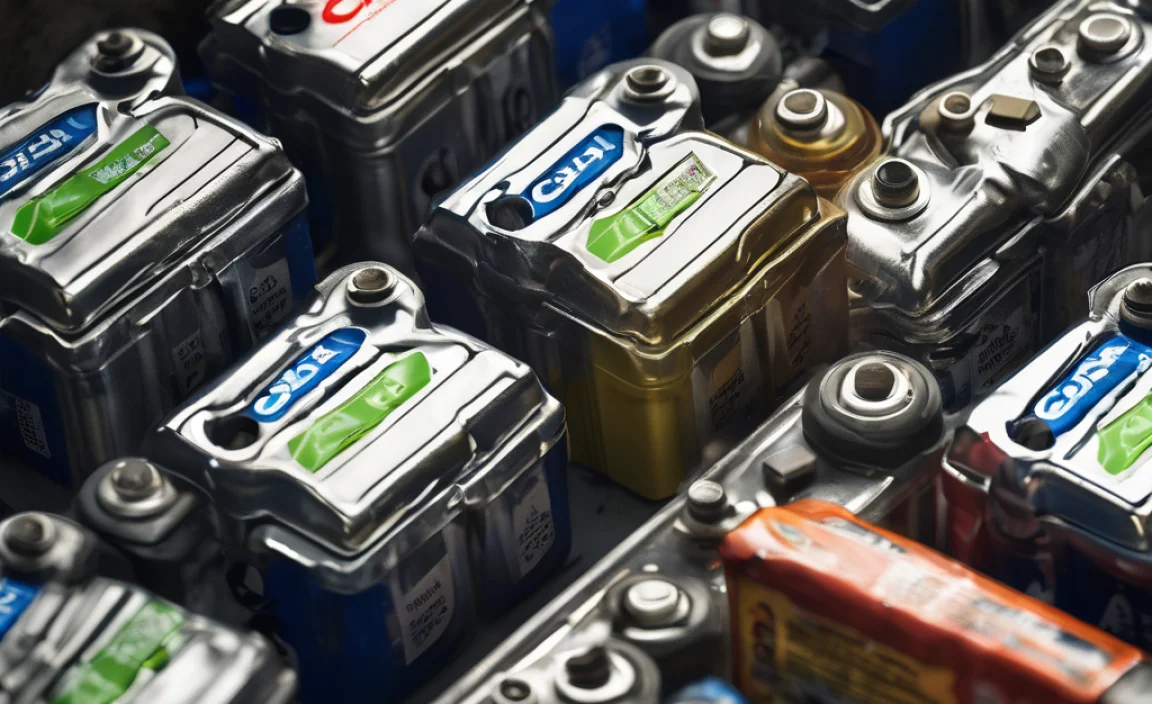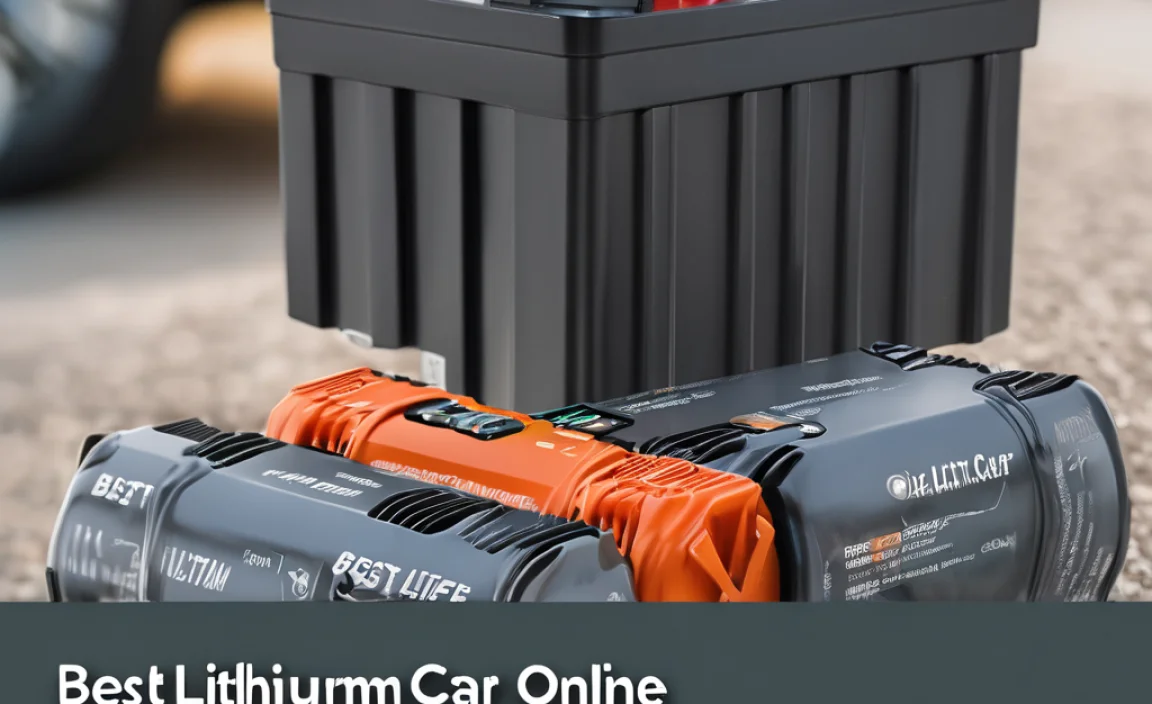Impact drill adapters are crucial tools that let you use your impact drill or driver with standard sockets, vastly expanding its versatility for tasks from changing car tires to assembling furniture. They are simple, safe, and essential if you want to get the most out of your power tools.
Ever looked at your trusty impact drill and wished it could do more? Maybe you’ve got a stubborn bolt on your car or a piece of furniture that needs tightening, and you know your drill has the power, but your socket set isn’t quite connecting. It’s a common frustration! Many people think they need a whole new tool for every job, but often, a simple adapter is the key. It’s like having a secret superpower for your drill that makes common tasks much easier and faster. You don’t need to be a master mechanic or a seasoned DIYer to use one. We’ll walk you through everything you need to know, making your tools work smarter, not harder.
What Exactly Is an Impact Drill Adapter?
Think of an impact drill adapter as a bridge. On one side, it has a drive that fits directly into your impact drill or impact driver – usually a 1/4-inch hex shank. On the other side, it has a square drive, just like the one you find on a standard socket wrench. This square drive can be 1/4-inch, 3/8-inch, or 1/2-inch, depending on the size of the sockets you want to use. So, when you attach the adapter to your drill and then attach a socket to the adapter, your drill’s powerful, high-torque rotational force (and in the case of an impact drill, the percussive hammering action) is transferred right to the bolt or nut you’re working on. It’s a simple but incredibly effective way to transform your drill into a powerful socket driver.
Why You Need One: The Benefits of an Impact Drill Adapter
Using an impact drill adapter isn’t just about convenience; it brings some real advantages to your DIY projects and everyday tasks. Let’s break down why this little tool is such a big deal.
Versatility Unlocked
- More Than Just Screws: Your impact drill is amazing for driving screws, but its true potential shines when you can use it for nuts and bolts too. Adapters let you do just that.
- Wide Range of Sockets: With the right adapter, you can use almost any socket in your collection – from small ones for electronics to larger ones for car parts.
- Adapt to Different Tasks: Whether you’re changing a tire, assembling furniture, working on your bike, or doing general household repairs, an adapter makes your drill adaptable to a huge variety of jobs.
Speed and Efficiency
- Quicker Fastening: Impact drills deliver a lot of torque, and when paired with an adapter and socket, they can tighten or loosen stubborn nuts and bolts much faster than by hand.
- Reduced Fatigue: For jobs involving many fasteners, using a powered drill with an adapter means less physicalStrain on your hands and wrists.
- Power When You Need It: That tough bolt that just won’t budge? An impact drill and adapter combination can often handle it with ease, saving you time and frustration.
Cost-Effectiveness
- Leverage Existing Tools: Instead of buying a separate impact wrench for every socket size, you can use your existing impact drill and socket set with just a few adapters. This saves a significant amount of money.
- One Tool, Many Jobs: This one adapter can enable your drill to perform tasks you might have otherwise needed entirely different tools for, making it a very economical addition.
Ease of Use
- Simple Design: Adapters are usually very straightforward. They typically have a quick-release mechanism on the hex shank end, making them incredibly easy to insert and remove from your drill.
- Beginner-Friendly: If you can use a screwdriver, you can use an impact drill adapter. The process is intuitive and requires no special skills.
Types of Impact Drill Adapters
While they all serve the same basic purpose, impact drill adapters come in a few common configurations. Understanding these will help you choose the right one for your needs.
By Drive Size
This is the most common way to categorize adapters. The drive size refers to the square post on the adapter that connects to your socket.
- 1/4-Inch Hex to 1/4-Inch Square: This is great for very small sockets, often used for delicate work or smaller fasteners. It’s less common for heavy-duty tasks but useful for specific applications.
- 1/4-Inch Hex to 3/8-Inch Square: This is arguably the most popular and versatile adapter. It allows you to use the wide range of 3/8-inch drive sockets that most DIYers and many professionals already own.
- 1/4-Inch Hex to 1/2-Inch Square: This adapter is for larger, heavy-duty sockets. It’s ideal for tasks involving larger bolts and nuts, such as automotive work (like changing tires) or construction.
By Shank Type
The shank is what inserts into your drill chuck or collet.
- Standard 1/4-Inch Hex Shank: This is the most common type. It’s designed to be held securely by the chuck of a drill, especially in drills with a quick-release chuck. Impact drivers, with their specific chucks, are designed to securely grip 1/4-inch hex bits.
- Quick-Release Hex Shank: Some adapters come with a spring-loaded ball bearing or a collar that makes them even easier to attach and detach from your drill’s chuck without needing to manually loosen the chuck.
Specialty Adapters
- Socket Extension Adapters: These combine a drive adapter with an extension, allowing you to reach fasteners in tight or recessed areas.
- Universal Joint Adapters: These have a universal joint built-in, enabling you to work at angles when direct access isn’t possible.
Choosing the Right Adapter: What to Look For
With so many options, picking the right adapter might seem tricky, but it’s actually quite straightforward. Focus on these key factors:
Drive Compatibility
- Match Your Sockets: The most important factor is the square drive size. Make sure the adapter’s square drive matches the sockets you plan to use most often. For most people, a 3/8-inch drive adapter is the best all-around choice.
- Match Your Drill: The shank end of the adapter needs to fit your drill or impact driver. For standard impact drills and drivers, a 1/4-inch hex shank is nearly universal.
Material and Durability
- Forged Steel: Look for adapters made from high-strength, forged steel (like Chrome Molybdenum or Cr-Mo steel for impact applications). This material is essential for handling the shock and torque of an impact tool. Cheaper, softer metals can bend or break under stress.
- Hardness: A good adapter should be hardened and tempered to withstand repeated impacts.
Impact Rated
This is crucial. Not all adapters are built for impact tools. Regular adapters may be made for standard drills, which apply less force. Impact drivers deliver powerful rotational force and a hammering action. Ensure the adapter is specifically labeled as “impact-rated” or “for impact use.” Using a non-impact adapter with an impact drill can lead to it breaking, potentially causing injury.
Brand and Warranty
- Reputable Brands: While some lesser-known brands offer good products, sticking with well-known tool brands often ensures better quality control and reliability.
- Warranty: A good warranty can offer peace of mind, especially for tools that will be under heavy use.
Features Like Quick Release
Consider if you want features like a quick-release collar. This can make swapping sockets and adapters much faster, which is a nice bonus during longer projects.
How to Use an Impact Drill Adapter Safely and Effectively
Using an impact drill adapter is simple, but following these steps will ensure you do it safely and get the best results every time.
Gather Your Tools and Materials
- Impact Drill or Impact Driver: Ensure it’s fully charged or has a fresh battery.
- Impact Drill Adapter: The correct drive size and shank type for your drill and sockets.
- Sockets: The correct size socket for the bolt or nut you are working with. Make sure they are also impact-rated if you are using an impact driver.
- Safety Glasses: Absolutely essential for protecting your eyes from flying debris.
- Work Gloves: Optional, but can improve grip and protect your hands.
- The Fastener: (Bolt, nut, etc.) you need to tighten or loosen.
Step-by-Step Guide
- Safety First: Always put on your safety glasses before you start. If working on a vehicle, ensure it is securely supported with jack stands on a level surface. Never rely solely on a car jack.
- Select Your Impact Drill Adapter: Choose the adapter that matches the drive size of your sockets (e.g., 3/8-inch or 1/2-inch square drive) and has a 1/4-inch hex shank to fit your drill.
- Insert the Adapter into the Drill:
- For Impact Drivers: Open the chuck (usually by pulling the collar forward) and insert the 1/4-inch hex shank of the adapter firmly. Release the collar to lock it in place. You should feel or hear it click.
- For Impact Drills with Standard Chucks: Open the chuck jaws wide enough to accept the 1/4-inch hex shank. Insert the adapter and then tighten the chuck firmly around the shank. If you have a keyed chuck, use the key to ensure it’s very snug.
- Attach the Socket: Place the desired socket onto the square drive end of the adapter. For most sockets, there will be a spring-loaded ball bearing on the adapter that clicks into a detent hole on the socket, securing it. Ensure the socket is seated properly.
- Position the Tool: Place the socket onto the bolt or nut you need to turn. Make sure it’s fully seated so it grips the fastener correctly.
- Set Your Drill/Driver:
- Direction: Set your drill or driver to the correct rotational direction. Usually, clockwise tightens (forward) and counter-clockwise loosens (reverse).
- Speed/Torque: Start with a lower speed setting if your tool has one. For impact drivers, they often have adjustable torque or speed settings. For very stubborn bolts, you might need a higher setting, but always start cautiously.
- Engage the Tool:
- Loosening: Gently squeeze the trigger. Let the impact action do the work. If it’s very tight, you might give it a short burst.
- Tightening: Again, start with a gentle squeeze. Once the fastener is snug, stop. For final tightening, especially on critical components like car wheels, it’s often best to finish with a torque wrench to avoid over-tightening.
- Remove the Socket and Adapter: Once done, carefully remove the socket from the fastener. To remove the adapter from your drill, press the collar forward (on impact drivers) or loosen the chuck (on impact drills) and pull the adapter out.
Important Safety Tips
- Always wear eye protection: It cannot be stressed enough. Debris can fly.
- Use impact-rated accessories: Non-impact sockets and adapters can shatter when used with an impact tool, causing serious injury.
- Ensure a firm grip: Hold your drill or driver securely, as the torque can sometimes cause it to twist unexpectedly.
- Avoid overtightening: Especially on delicate items or critical vehicle components. Over-tightening can strip threads, break fasteners, or damage parts. Always use a torque wrench for precise tightening when needed, such as for lug nuts. For reference, see the NHTSA’s guidance on tires and wheels, which emphasizes proper torque.
- Check your adapters regularly: Look for any signs of wear, cracking, or bending. Discard damaged adapters immediately.
- Understand your tool’s limits: Don’t try to do work that is beyond the capacity of your drill or the adapter. Sometimes, a larger, dedicated tool is necessary for very heavy-duty tasks.
Impact Drill Adapters vs. Impact Wrenches
It’s common to wonder about the difference between using an adapter with your drill and owning a dedicated impact wrench. They both use torque and impact to tighten and loosen fasteners, but there are key distinctions.
| Feature | Impact Drill Adapter Setup | Dedicated Impact Wrench |
|---|---|---|
| Core Tool | Impact Drill or Impact Driver | Purpose-built Impact Wrench |
| Power Delivery | Relies on drill’s motor and impact mechanism, often less optimized for pure torque/impact | Designed specifically for high torque and impact, direct power transfer |
| Torque Output | Varies greatly by drill model; generally lower than dedicated impact wrenches. | Significantly higher torque ratings, designed for heavy-duty use (e.g., automotive lug nuts). |
| Size & Weight | Combined tool can be bulkier and heavier. | Often more compact and ergonomically designed for its specific function. |
| Versatility | Drill can still be used for drilling/driving screws. Adapter adds socket capability. | Primarily for fastening tasks; less versatile for other jobs. |
| Cost | Inexpensive adapter cost to add functionality to existing drill. | Higher initial investment for the dedicated tool. |
| Best For | Occasional use, light to medium-duty tasks, leveraging existing tools. | Frequent, heavy-duty fastening, professional automotive work, construction. |
An impact drill adapter is an excellent, budget-friendly way to add socket capability to a tool you likely already own. A dedicated impact wrench is a more powerful, specialized tool for those who perform high-torque, repetitive fastening tasks regularly.
Maintenance and Care for Your Adapters
Just like any tool, proper care will extend the life of your impact drill adapters and keep them performing reliably. It’s simple and doesn’t take much time.
- Clean After Use: Wipe down your adapters with a clean, dry cloth after each use to remove dirt, grime, and any rust-preventative oil that may have been applied.
- Prevent Rust: Store them in a dry place. If they are made of steel, a light coating of oil can help prevent rust, especially if you live in a humid climate.
- Inspect Regularly: Before each use, and periodically thereafter, check your adapters for any signs of wear or damage. Look for:
- Cracks, especially around the drive sockets or hex shanks.
- Bending or deformation of the square drive or hex shank.
- Excessive wear on the detent ball or spring (if applicable).
- Proper Storage: Keep them organized. A tool roll, a designated drawer in your toolbox, or a small case can prevent them from




